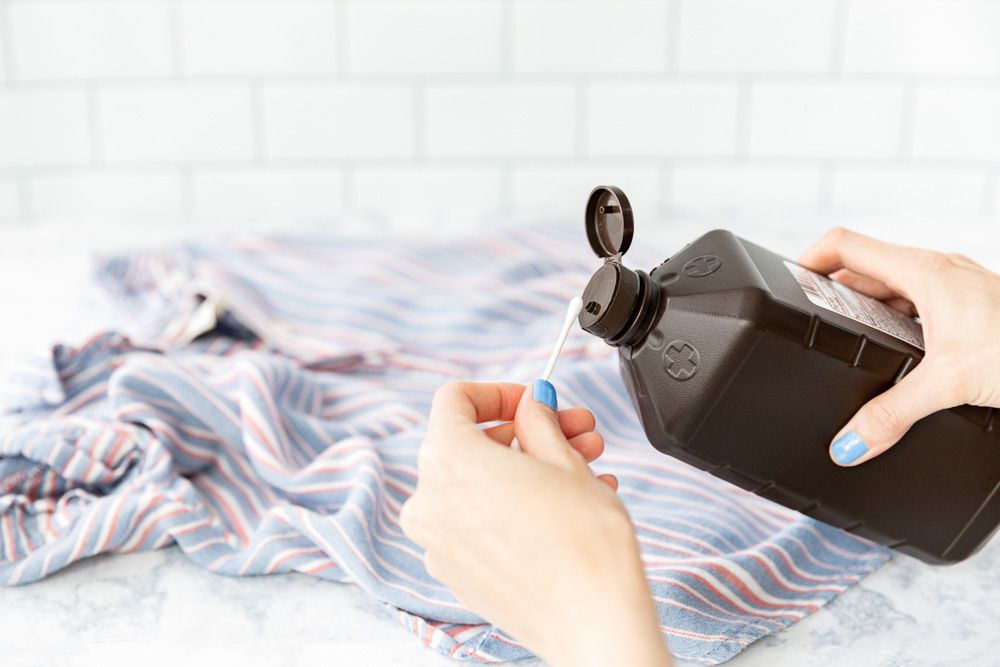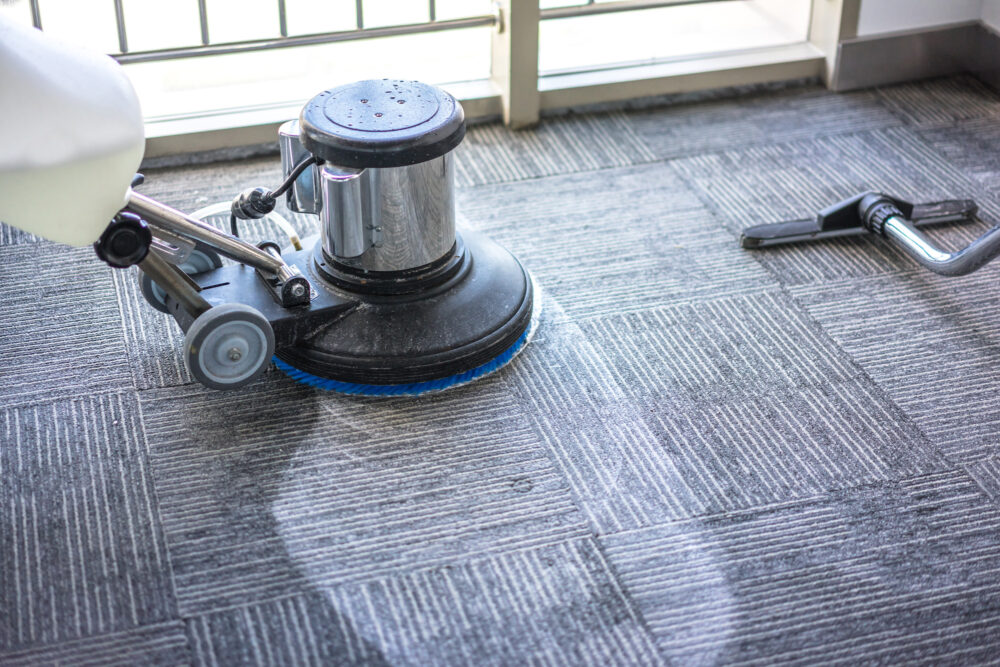Carpets are a popular choice for flooring in many homes due to their comfort, warmth, and ability to add a touch of style to any room. However, one of the main downsides to having carpets is that they are prone to stains.
From spilled wine to muddy footprints, stains can quickly ruin the appearance of your beautiful carpet. While professional cleaning services are an option, they can be costly and inconvenient.
Fortunately, there are several effective home remedies that you can use to tackle carpet stains without needing expensive chemicals or services. In this comprehensive guide, we’ll explore a variety of tried-and-true methods for removing different types of stains from your carpet using ingredients you likely already have at home.
We will cover everything from food and drink spills to pet accidents, providing you with step-by-step instructions to restore your carpet to its original glory.
Understanding Carpet Stains
Before diving into the remedies, it’s important to understand that not all stains are created equal. The type of stain, the material of your carpet, and how long the stain has been there can all impact the effectiveness of different cleaning methods. Broadly, carpet stains can be categorized into three types:
- Water-based stains: These include spills like juice, coffee, or soda. They are generally easier to clean because water is a primary component.
- Oil-based stains: Examples include grease, cooking oil, or makeup. These stains are more challenging because oil repels water.
- Protein-based stains: Stains from food like eggs, dairy products, and bodily fluids such as blood, urine, or vomit. These require more care due to the proteins that bond strongly with carpet fibers.
Knowing the type of stain is crucial for choosing the right cleaning method. Let’s look at some common home remedies that can tackle each type effectively.
Home Remedies for Common Carpet Stains
1. Baking Soda and Vinegar
Baking soda and vinegar are household staples known for their versatility in cleaning. This powerful duo can tackle a wide range of stains, especially water-based ones.
How to Use:
- Blot the Stain: Begin by blotting the stain with a clean cloth to remove as much of the spill as possible. Avoid rubbing, as this can spread the stain further into the carpet fibers.
- Apply Baking Soda: Sprinkle a generous amount of baking soda over the stain. Baking soda is excellent for absorbing moisture and neutralizing odors.
- Spray Vinegar Solution: Mix equal parts white vinegar and water in a spray bottle. Spray the solution over the baking soda until it starts to fizz. The fizzing action helps lift the stain from the carpet fibers.
- Wait and Scrub: Let the mixture sit for about 15 minutes. Afterward, scrub the area gently with a soft brush or cloth.
- Blot Again: Blot the area with a clean, damp cloth to remove the vinegar and baking soda residue.
- Dry: Allow the carpet to air dry completely. Vacuum the area to lift any remaining baking soda.
This method works particularly well for fresh stains. For older stains, you may need to repeat the process a couple of times.
2. Dish Soap and Warm Water
For general stains, dish soap can be an effective cleaner because it is designed to cut through grease and grime.
How to Use:
- Mix the Solution: Combine a teaspoon of mild dish soap with two cups of warm water in a bowl.
- Apply the Solution: Using a clean cloth or sponge, dab the solution onto the stained area. Be careful not to saturate the carpet too much.
- Blot the Stain: Gently blot the stained area with the cloth, working from the outside towards the center to avoid spreading the stain.
- Rinse: After blotting, use a damp cloth with plain water to remove any soap residue.
- Dry: Blot dry with a clean, dry towel and let the carpet air dry.
Dish soap is especially good for stains like chocolate, wine, or ketchup.
3. Hydrogen Peroxide for Tough Stains
Hydrogen peroxide is a strong stain remover and works particularly well on tough stains like blood, red wine, or ink. It’s important to use a 3% solution and test it on an inconspicuous area first to ensure it does not discolor your carpet.

How to Use:
- Test First: Apply a small amount of hydrogen peroxide on a hidden section of the carpet to ensure it doesn’t bleach the color.
- Apply to Stain: Pour a small amount of hydrogen peroxide directly onto the stain.
- Let It Sit: Allow it to sit for about 10 minutes to break down the stain.
- Blot: Gently blot with a clean cloth or sponge. You should see the stain lifting onto the cloth.
- Rinse and Dry: Use a damp cloth to remove any remaining hydrogen peroxide and blot dry.
Hydrogen peroxide is also useful for removing mildew and mold from carpets.
4. Club Soda for Stains
Club soda is an effective remedy for fresh stains, particularly those from wine or coffee, due to its carbonation and salt content.
How to Use:
- Blot the Stain: As always, start by blotting up as much of the spill as possible.
- Pour Club Soda: Pour a small amount of club soda directly onto the stain.
- Blot Again: Use a clean cloth to blot the stain, working from the outside in.
- Repeat: Repeat the process until the stain is completely lifted.
- Dry: Let the area air dry.
Club soda is most effective when used immediately after a spill occurs.
5. Cornstarch and Milk for Grease Stains
Grease stains are notoriously tricky to remove due to their oily nature. Cornstarch, combined with milk, can help absorb the oil and lift the stain.
How to Use:
- Prepare the Mixture: Make a paste using cornstarch and a small amount of milk.
- Apply to Stain: Apply the paste generously over the grease stain.
- Let It Dry: Allow the paste to dry completely, which may take a few hours.
- Brush Off: Once the paste has dried, brush it off with a soft-bristled brush.
- Vacuum: Vacuum the area to remove any remaining cornstarch.
This method is particularly useful for older grease stains that have set into the carpet fibers.
6. Lemon Juice and Salt for Light-Colored Carpets
Lemon juice is a natural bleaching agent and, when combined with salt, can help lift stains from light-colored carpets.
How to Use:
- Apply Lemon Juice: Pour lemon juice over the stain.
- Add Salt: Sprinkle salt over the area to help scrub the stain away.
- Scrub: Gently scrub the area with a soft brush or cloth.
- Blot: Use a damp cloth to blot the area clean.
- Dry: Allow the carpet to dry naturally.
This method works best on light-colored carpets due to the bleaching effect of lemon juice.
7. Shaving Cream for General Stains

Believe it or not, non-gel shaving cream can be an effective cleaner for many types of carpet stains.
How to Use:
- Apply Shaving Cream: Spray shaving cream directly onto the stain and let it sit for about 30 minutes.
- Blot: After it has set, blot the area with a damp cloth.
- Rinse: Spray the area with a vinegar-water solution and wipe clean.
- Dry: Blot dry with a clean towel.
Shaving cream is a good all-purpose cleaner that can handle various stains.
Tips for Effective Carpet Cleaning
- Act Quickly: The sooner you treat a stain, the easier it will be to remove. Fresh stains are always easier to clean than those that have been set.
- Blot, Don’t Rub: Always blot stains with a clean cloth instead of rubbing. Rubbing can push the stain deeper into the carpet fibers.
- Test Before Applying: Always test any cleaning solution on a hidden part of the carpet to ensure it doesn’t damage or discolor the fibers.
- Use a Soft Brush: For scrubbing, use a soft-bristled brush to avoid damaging the carpet fibers.
- Rinse Thoroughly: Make sure to rinse the carpet with clean water after applying any cleaning solution to remove any residue that could attract dirt.
- Vacuum After Drying: Once the carpet is completely dry, vacuum the area to lift the carpet fibers and remove any remaining particles.
- Keep Pets and Kids Away: If you have applied a cleaning solution, keep children and pets away from the treated area until it is completely dry.
- Regular Maintenance: Regular vacuuming and prompt attention to spills will help maintain the carpet’s appearance and prolong its life.
How to Handle Specific Stains
Wine Stains
For red wine, start by blotting as much as possible. Follow with the baking soda and vinegar method or use club soda to neutralize the stain. For white wine, dish soap and water usually suffice.
Coffee Stains
Coffee stains, especially those with cream and sugar, can be stubborn. The dish soap and vinegar method is particularly effective here. Hydrogen peroxide is a good alternative if the coffee has left a deep stain.
Pet Stains
For pet urine, neutralize the stain as quickly as possible with a mixture of white vinegar and water. Follow up with baking soda to eliminate any remaining odor. Enzyme cleaners specifically designed for pet stains are also highly effective.
Ink Stains
Ink can be tricky, but rubbing alcohol works well. Apply alcohol to a cloth and dab the stain gently, being careful not to spread it. Blot until the ink lifts and rinse with water.
Blood Stains
Blood stains should be treated with cold water. Avoid hot water as it can set the stain. Use a mild detergent or a mixture of hydrogen peroxide and water to lift the blood from the carpet fibers.
Preventive Measures for Carpet Stains
- Use Rugs and Runners: Placing rugs and runners in high-traffic areas can help protect the carpet from spills and stains.
- Implement a No-Shoes Policy: Encourage family members and guests to remove their shoes when entering the house to reduce dirt and grime on the carpet.
- Regular Vacuuming: Vacuum carpets regularly to remove dirt and dust that can lead to stains.
- Use Carpet Protectors: Consider applying a carpet protector or stain-resistant treatment, especially for households with children and pets.
- Clean Up Spills Immediately: The quicker you address a spill, the less likely it is to become a permanent stain.
- Keep Cleaning Supplies Handy: Having a stash of basic cleaning supplies like vinegar, baking soda, dish soap, and clothes makes it easier to respond quickly to spills.
Conclusion
Carpet stains are an inevitable part of life, but they don’t have to be a permanent fixture in your home. With a little know-how and some common household ingredients, you can effectively tackle a wide range of stains and keep your carpets looking fresh and clean.
Remember, the key is to act quickly, choose the right method for the type of stain, and maintain regular carpet care. These home remedies not only save you money but also protect your family from the harsh chemicals often found in commercial cleaning products.
With these tips and tricks, you’re well on your way to mastering carpet care and maintaining a spotless home environment.




